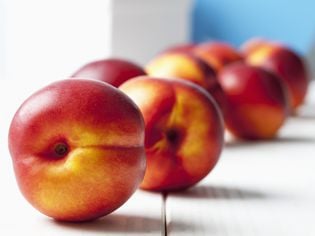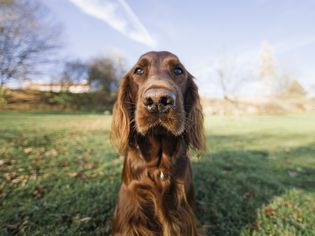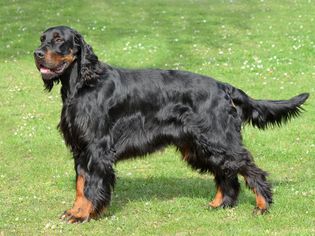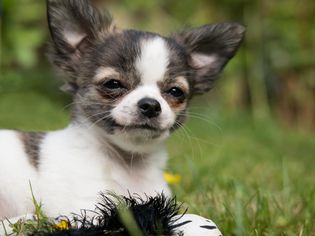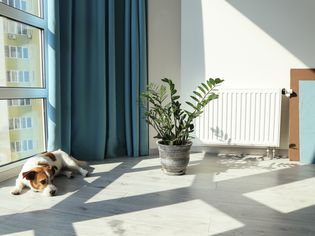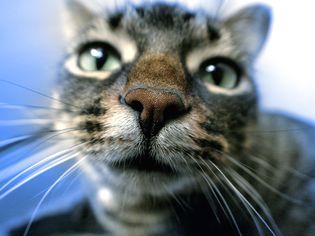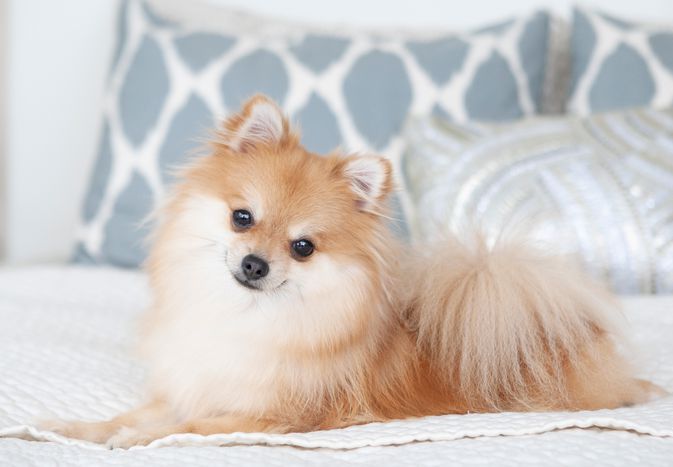Maltipoos are the result of a cross between the Maltese and miniature or toy poodle. These small pups have a medium-to-long, wavy, or curly coat that's low-shedding. Inheriting their smarts from both parent breeds, Maltipoos are generally easy to train, although sometimes stubborn. Their small size, usually no more than 20 pounds and 14 inches tall, can make them great companions for apartment living. Their people-oriented personalities can be a good match for first-time pet parents, empty nesters, and many other pet lovers in between.
We talked with a vet to learn all about the Maltipoo, including their characteristics, care needs, health, and history.
Breed Overview
GROUP: Toy
HEIGHT: 8 to 14 inches
WEIGHT: 5 to 20 pounds
COAT: Wavy, curly, long, medium, soft
COAT COLOR: Black, blue, brown / chocolate / liver, cream, fawn, gold / yellow, gray, red, white
LIFE SPAN: 10 to 13 years
TEMPERAMENT: Affectionate, alert, intelligent, playful
HYPOALLERGENIC: Yes
ORIGIN: Malta/Mediterranean region and Germany
Characteristics of the Maltipoo
Maltipoos tend to have very sociable personalities that make them suitable for family life and households with other pets, says Wendy Hauser, DVM, veterinary advisor to ASPCA Pet Health Insurance. While they may alert you to strangers with a bark, Maltipoos are more interested in making friends than guarding your home.
| Affection Level | High |
| Friendliness | High |
| Kid-Friendly | High |
| Pet-Friendly | High |
| Exercise Needs | Medium |
| Playfulness | High |
| Energy Level | Medium |
| Trainability | Medium |
| Intelligence | Medium |
| Tendency to Bark | Medium |
| Amount of Shedding | Low |
History of the Maltipoo
Maltipoo pups are a designer dog breed developed in the 1990s. They were specifically bred to be affectionate lap dogs—and they’ve certainly lived up to the expectations. While the Maltipoo itself boasts a short history, their parent breeds have lineages dating back hundreds to thousands of years.
The Maltese hails from the island of Malta and has charmed humans for centuries, even catching the eye of Aristotle. The Maltipoo’s other genetic half, the poodle, was originally bred in Germany as a water retriever and later became the national dog of France.
Maltipoo Care
Happy to play a game of fetch or snuggle in a warm lap, Maltipoos require daily exercise and grooming. Early socialization is also important to prevent them from becoming overly attached or territorial.
Exercise
Adult Maltipoos need around 30 minutes of exercise a day. Whether it's a brisk walk to explore the neighborhood or an energetic play session indoors, Maltipoos don't require a lot of space to burn off their energy. However, don't underestimate this pint-sized pup. Because they form such strong bonds with their people and respond well to training, many Maltipoos enjoy dog sports such as agility training and rally.
"Because of their small size, they should never be left outdoors unattended, as they could easily be victims of birds of prey, coyotes, fox, and stray dogs," Hauser says.
Grooming
While their low-shedding coat might suggest low-maintenance care, the soft curls of the Maltipoo require their fair share of grooming. Their hair is very fine and prone to matting, so daily brushing is a must. Each month, plan for the following grooming tasks:
- Face trims (Full haircuts can be scheduled less frequently, depending on your preference.)
- Bath
- Nail trim
- Teeth check
Training
Maltipoo dogs are inherently smart pups and eager to please their humans, but they can have a stubborn streak. Training with plenty of positive reinforcement (play, treats, praise for wanted behaviors) will keep training fun and lighthearted, a good approach for any dog breed.
Because Maltipoos develop such strong bonds with their humans, they can develop anxious tendencies. Following a routine and incorporating short practice periods of independence will help build their confidence and comfort when you're busy or away from home. "And avoiding making a big fuss over the pet when leaving and when getting home—it can fuel anxiety in the dog," Hauser adds.
Common Health Problems
Maltipoos have an average lifespan of 10 to 13 years. However, like all breeds, they can be susceptible to certain health conditions, including:
- Patellar luxation: A condition in which the knee cap (patella) slips (luxates) from its normal position. While severe cases may require surgery, milder forms can often be managed through weight control and a veterinarian-recommended joint-healthy diet or supplementation.
- Dental disease: Common in many dogs—80-90% of dogs over the age of three have some form of the disease. You can help prevent bad breath, gingivitis, and other forms of dental disease by brushing your Maltipoo’s teeth at home. Follow your vet’s recommendation for routine dental exams and cleanings.
You can increase the likelihood of a healthy puppy by choosing a reputable breeder. "The breeder should be able to provide a documented clear cardiac ultrasound in the Maltese parent and genetic testing for inherited eye and blood clotting disorders in the poodle parent," Hauser says.
Then, from puppyhood and beyond, keep up with routine wellness exams including essential vaccinations. They’re crucial for disease prevention and early detection of any potential issues. Purchasing pet insurance or a wellness plan for your Maltipoo puppy can help pay for those medical expenses.
Diet and Nutrition
While all dogs can become overweight if overfed, small breeds are particularly susceptible. Sticking to a regular feeding schedule with measured meals and treats in addition to regular exercise is key to maintaining a healthy weight. If you're unsure how many calories your dog should eat in a day, consult your veterinarian. They can create a personalized feeding plan based on your dog's age, activity level, current weight, and ideal weight.
Maltipoos should eat commercial dog food for small dogs that meets the nutritional recommendations established by the Association of American Feed Control Officials (AAFCO) for your dog’s life stage. This ensures they receive all the essential vitamins and nutrients they need for their age. Regardless of whether you choose dry, canned, or fresh food, always provide fresh, clean water for your pet.
Where to Adopt or Buy a Maltipoo
It’s worth checking local animal shelters and online adoption databases, such as Adopt-a-Pet, for a Maltipoo in need of a home. There may also be Maltipoo-specific rescue groups in your area. Maltipoo puppies from a reputable breeder cost around $2,000.
Maltipoo Overview
Maltipoos are small, sociable, and intelligent dogs with low-shedding coats. They generally take well to training but can be stubborn at times. Maltipoos are well-suited for various living situations and require daily exercise and regular grooming to maintain their health and good looks.
A good choice for apartment living, families, and first-time pet owners.
Responds well to positive reinforcement training.
A good option for allergy sufferers.
Require daily brushing and regular grooming.
Can become anxious when left alone.
Have a tendency to bark
More Dog Breeds and Further Research
If the Maltipoo caught your eye, you might also like another poodle mix:
- Shih-poo
- Poochon
- Cavapoo
- Goldendoodle
Or perhaps you’d like to explore another small dog breed altogether:
- English toy spaniel
- Brussels griffon
- Bichon frise
- Miniature schnauzer
- Do Maltipoos bark a lot?
Maltipoos can be vocal dogs, especially due to their poodle parent. Proper training can help curb their tendency to bark.
Are Maltipoos high-maintenance dogs?They have lower exercise needs than other dogs, but they make up for that in grooming needs. They will need regular professional grooming appointments to prevent painful mats and keep their coat in tip-top condition. Prepare for this expense before you bring a Maltipoo home.
Are Maltipoos good family dogs?Yes, Maltipoos can make great family dogs as long as they've been properly socialized and trained. If they will be interacting with kids, teach the kids how to respectfully interact with dogs to build a more harmonious relationship.

